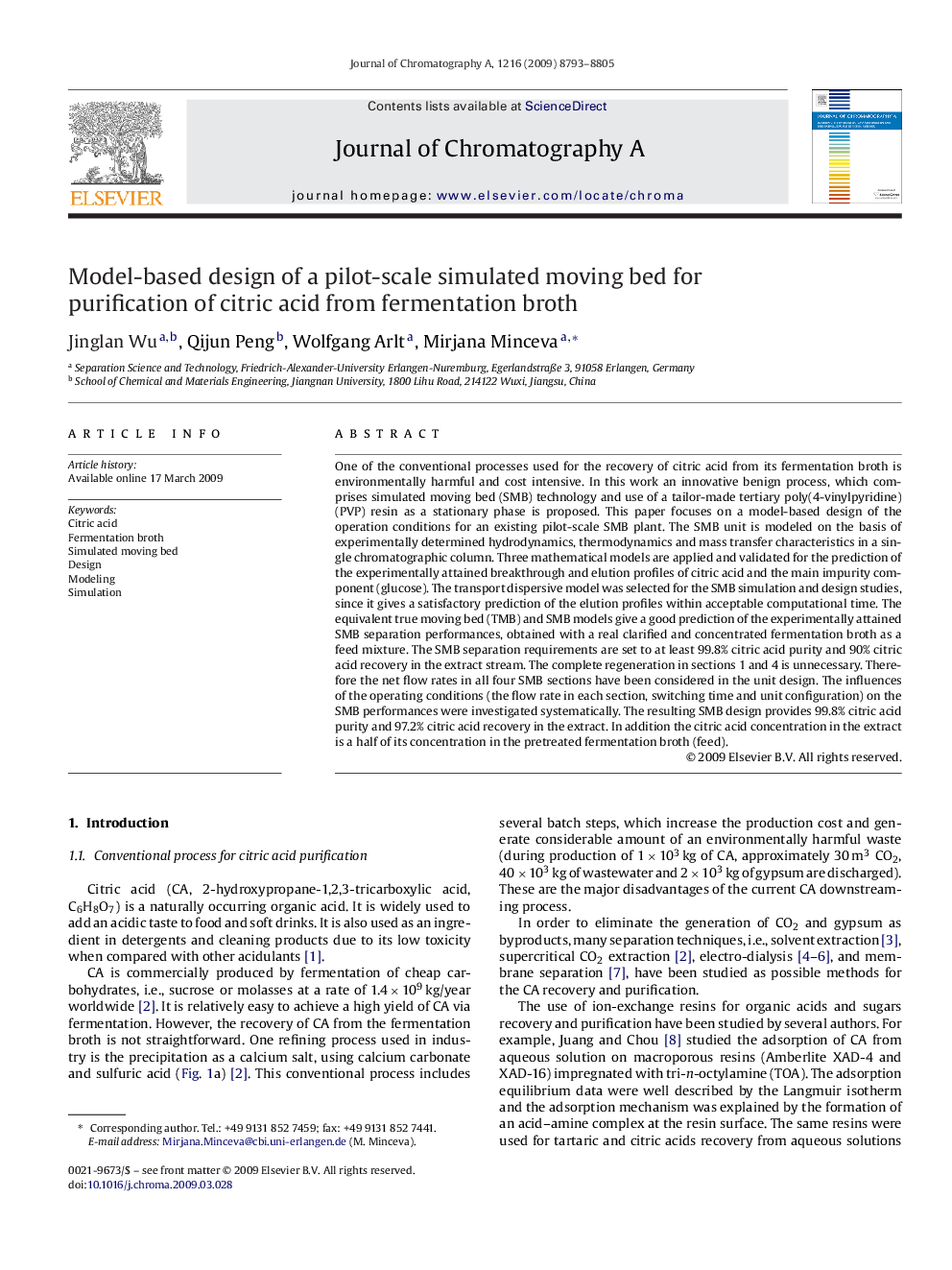| Article ID | Journal | Published Year | Pages | File Type |
|---|---|---|---|---|
| 1205628 | Journal of Chromatography A | 2009 | 13 Pages |
One of the conventional processes used for the recovery of citric acid from its fermentation broth is environmentally harmful and cost intensive. In this work an innovative benign process, which comprises simulated moving bed (SMB) technology and use of a tailor-made tertiary poly(4-vinylpyridine) (PVP) resin as a stationary phase is proposed. This paper focuses on a model-based design of the operation conditions for an existing pilot-scale SMB plant. The SMB unit is modeled on the basis of experimentally determined hydrodynamics, thermodynamics and mass transfer characteristics in a single chromatographic column. Three mathematical models are applied and validated for the prediction of the experimentally attained breakthrough and elution profiles of citric acid and the main impurity component (glucose). The transport dispersive model was selected for the SMB simulation and design studies, since it gives a satisfactory prediction of the elution profiles within acceptable computational time. The equivalent true moving bed (TMB) and SMB models give a good prediction of the experimentally attained SMB separation performances, obtained with a real clarified and concentrated fermentation broth as a feed mixture. The SMB separation requirements are set to at least 99.8% citric acid purity and 90% citric acid recovery in the extract stream. The complete regeneration in sections 1 and 4 is unnecessary. Therefore the net flow rates in all four SMB sections have been considered in the unit design. The influences of the operating conditions (the flow rate in each section, switching time and unit configuration) on the SMB performances were investigated systematically. The resulting SMB design provides 99.8% citric acid purity and 97.2% citric acid recovery in the extract. In addition the citric acid concentration in the extract is a half of its concentration in the pretreated fermentation broth (feed).
